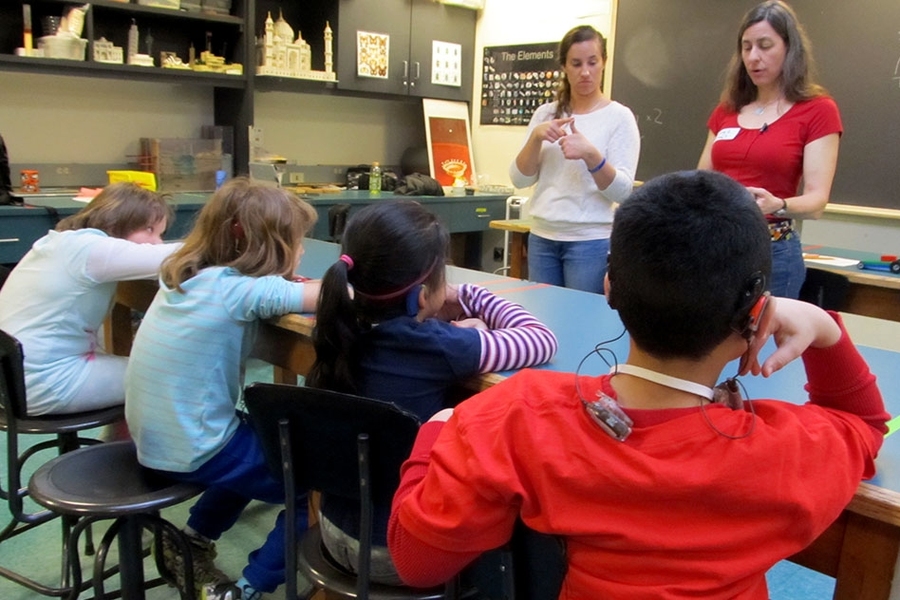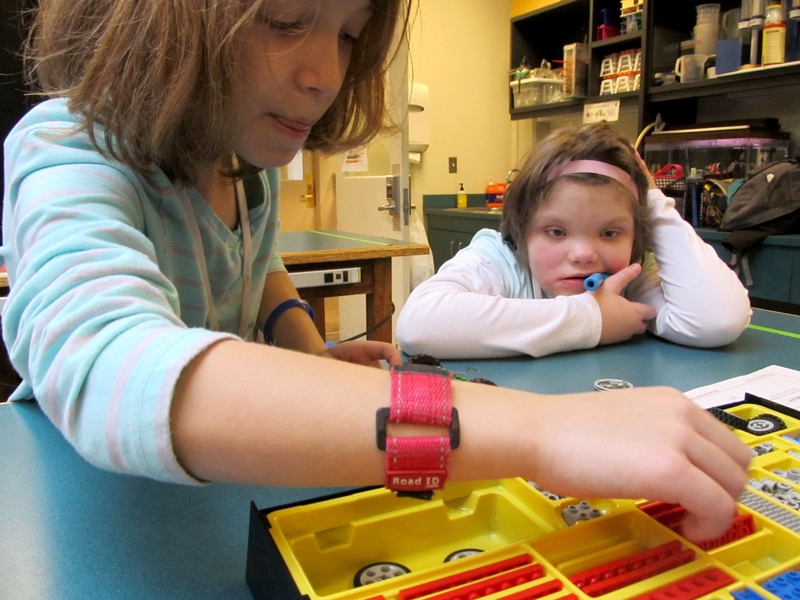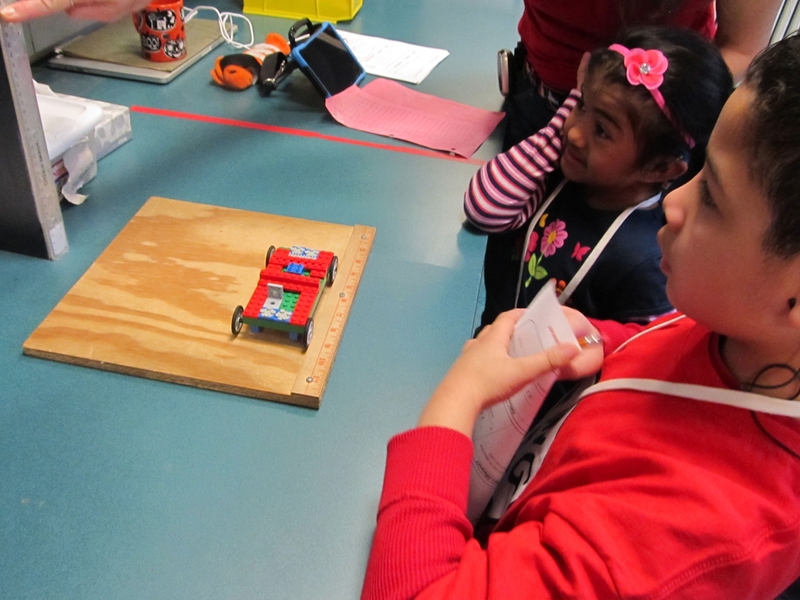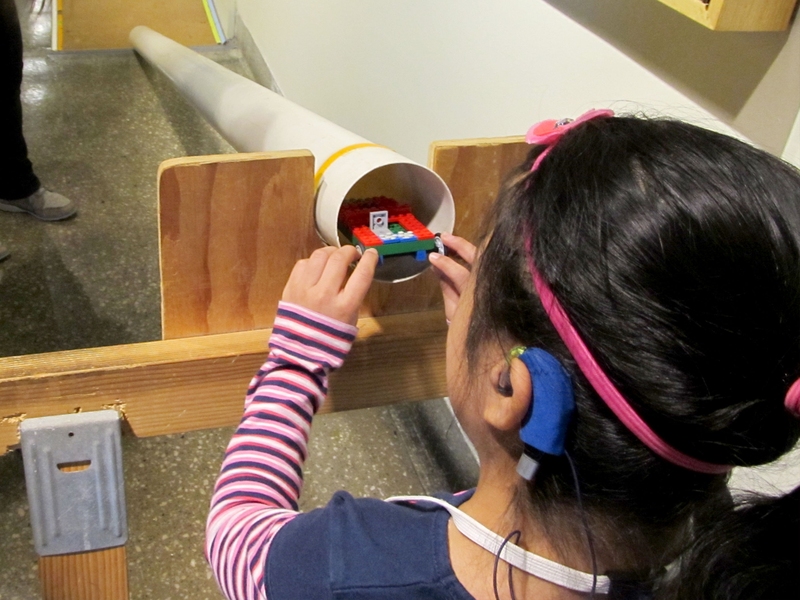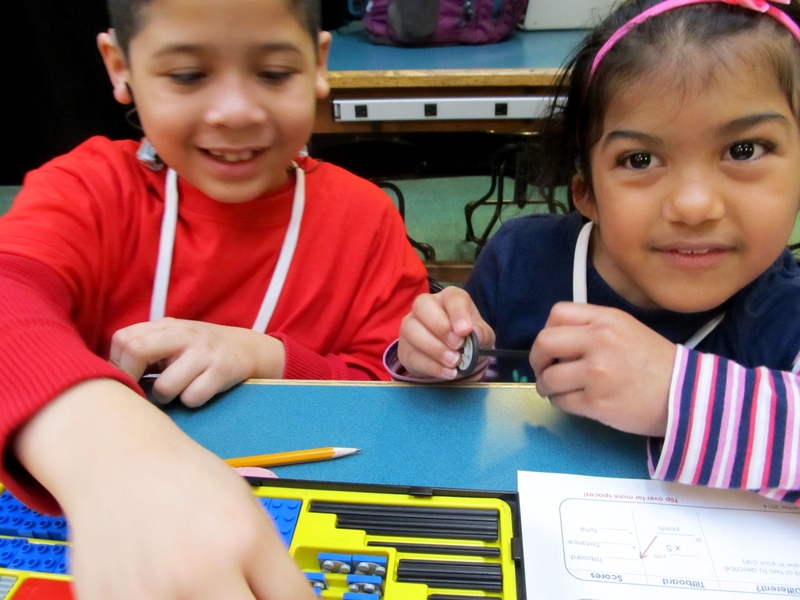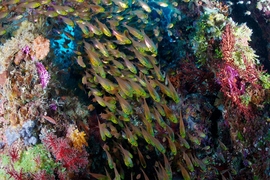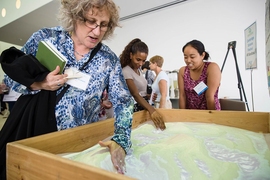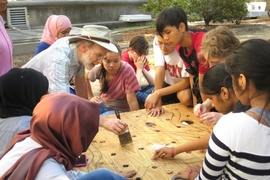Joyful voices echo down the halls of the fourth floor of MIT’s Building 4. Raicheal and Cori, two of the five visiting 3rd and 4th grade students, re-enter Room 4-402. One has a Lego car in her hands, the other a paper and pencil, and both wear bright smiles on their faces. The first model they built didn’t just go over the ramp in the hallway, a feat that few students’ cars master on the first attempt; it surmounted the incline and traveled meters down the hall, scoring the two young engineers a whopping 165 points from the distance test alone.
“One of the best first cars,” remarks Amy Fitzgerald who teaches the Edgerton Center’s K-12 classes. “Wow,” she adds, her eyes open wide and her eyebrows raised. Her excitement is not forced. The students are no ordinary group: They attend Beverly School for the Deaf (BSD) in Beverly, Massachusetts, and their needs are diverse.
While some students have cochlear implants or hearing aids, others can hardly hear at all. This means that, to accommodate all students, teachers at BSD must alternate between the use of sign language and oral speech when giving instructions. Today’s visit to MIT is no different.
As Fitzgerald paces herself in giving oral instructions in English, Isabelle Pisini, staff member at BSD, interjects with the same instructions in American Sign Language. Pisini’s cheerful hand motions and Fitzgerald’s lips take turns commanding the students’ attention. All the while, the five students maintain surprisingly sunny expressions.
In addition to the diverse levels of hearing impairments, students at BSD “have cognitive delays, behavioral problems, and all sorts of disabilities,” Pisini explains during lunchtime. “Some families don’t sign. Kids who have families who don’t speak sign language are affected a lot.” They often get frustrated or upset when they’re in the classroom.
Students can develop behavioral issues that require the help of counselors, applied behavioral analysis therapists, and other medical specialists and nurses. It’s no wonder that most classrooms at BSD have close to a one-to-one staff-to-student ratio.
Circumstances like these faced by BSD students on a daily basis, however stressful or challenging, are easily overshadowed by today’s fun learning activity.
The lesson, called “Lego Car Rally,” is one of the Edgerton Center’s 11 unique, hands-on activities. Students work in groups of two and are assigned the task of building, and then improving, a car using one Lego kit that can do well on two tests: the tiltboard test and the distance test. The former test involves setting the car on a tiltboard and recording the height at which the car tips over sideways; the score is the height (in cm) multiplied by 5. The score from the distance test is 100 points if the car makes it over the incline plane plus the distance it travels down the hall (in decimeters).
Throughout the day, Fitzgerald and her assistants take the time to share the joys of working with the five students. “As it turns out, there’s a reason I look forward to doing this every day,” says Fitzgerald as she makes eye contact with another smiling teacher.
One of Fitzgerald’s assistants is also Cori's mother. “Isn’t she a cutie,” she says when asked about her daughter. When Cori’s car does well on both tests, Cori gives high fives to Fitzgerald’s assistants.
Many students who visit the Edgerton Center, including today’s BSD students, benefit from the learning experience. Pisini shares that she focuses her lessons on “very hands-on learning, often project-based.” She has no other option: Her kids are visual learners. “Their language is visual,” she says, while at other schools kids can “speak and see.” “Being able to say that a mechanism depends on the weight of a car and that it might affect how far it can go” is a major takeaway for them, says Pisini. “Connecting everything together is a great way to wrap up the simple machine unit.” Although they had talked about an incline plane, seeing and touching a tiltboard and calling it an incline plane is a great way for them to remember what it is. “We like to give them exposure,” she says.
When asked about why it’s important for kids to visit the MIT Edgerton Center, Pisini says: “some have been told or feel like they can’t do something. Just because you’re deaf doesn’t mean you can’t do something.” True indeed.
